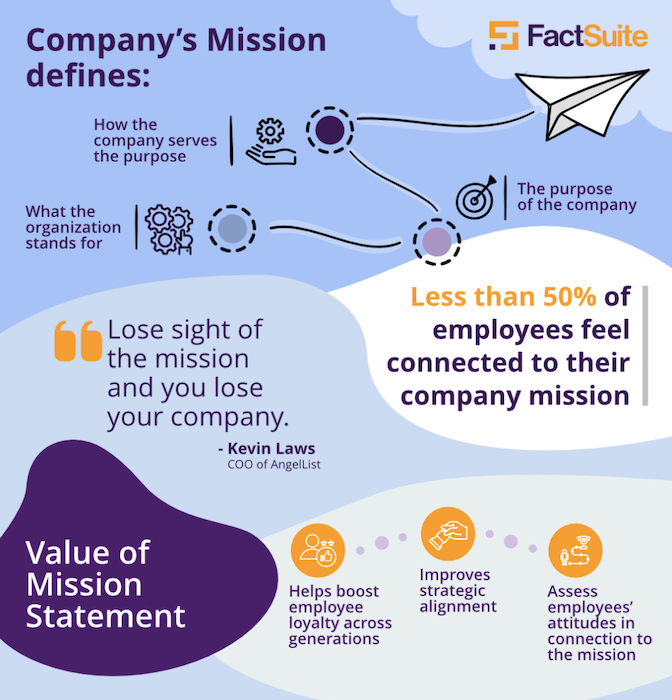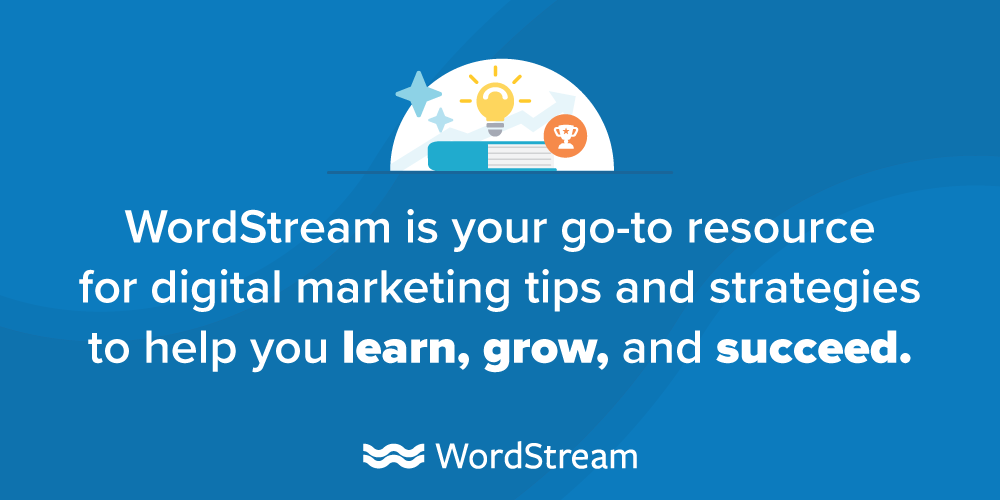A rather awkward confession: I have a deep, unabashed love of mission statements.
Lately, I’ve used my own personal mission statement (“I’m a writer who develops and amplifies other voices”) to guide my life choices on everything from career path and social media strategy to which emails get answered and when. Personal mission statements offer the opportunity to identify what is important to you and clarify what your priorities are.

Once identified, the personal mission statement makes it easier to move forward and be confident that the decisions you are making are in line with your own values.
Your company mission statement works the same way. Forbes contributor Len Sherman compared a company’s mission statement to a “North Star,” working as a guiding light to keep your business on track, a method for orienting your company in the world.
Sherman also provided case studies of how four major companies realigned their strategy with their mission to achieve significant comebacks. When these companies repositioned their business strategy to be more mission-based, they stopped floundering and grew significantly in the marketplace.
Ultimately, your business’s mission is tied to your business’s success.
So, What Is a Mission Statement?
Before sitting down to brainstorm ideas and draft your mission statement with your team, it’s important to talk about the difference between a mission statement vs. a vision statement.
But here’s another secret: Even the experts can’t quite agree on which is which. Not all mission statements are created equal — what some folks consider a mission statement is to others a vision statement.
Mission statements, however, typically cover topics such as what your company is and how your company functions in the world.
Sometimes, the “what” and the “how” are enough to communicate your company’s purpose — the company’s reason for existence, or “why.” Sometimes, the “why” is stated explicitly as part of the mission statement.
Go for the Golden Circle with Your Mission Statement
These three elements of mission statements are in line with thought leader Simon Sinek’s Golden Circle. Sinek states that too many companies start with the “what” and the “how” of their organization, without ever articulating the “why.” The companies that focus on the “why,” he argues, are the ones that are most successful.
Sinke puts it simply: “People don’t buy what you do. They buy why you do it.”

Whether you call the three parts of your Golden Circle a “mission” statement or a “vision” statement may not matter much. What matters is that you identify and articulate these three concepts for your company in the first place.
You might wonder why you should bother taking the time to create a mission statement for your organization at all if even the experts can’t agree on which essential components (e.g., what, how, and why) are part of the definition.
However, a carefully crafted mission statement can have many benefits and may ultimately affect your bottom line.
3 Reasons You Need a Mission Statement (Now More Than Ever)
Here are three benefits that can come from taking the time to carefully create a mission statement.
1. Mission Statements Can Increase Employee Motivation & Engagement
More and more, consumers are searching for authenticity when they are making purchasing decisions. This applies to your employees as well. But what attracts employees has shifted with millennials to a much larger emphasis on company purpose. In fact, over 70% of millennials expect to focus on mission-driven problems in the workplace.
Mission-driven employees are also 30% more likely to be high performers and 54% more likely to stay employed at a company for more than five years.
A mission statement is one way to clearly advertise your organization’s purpose to your potential workforce.
2. Mission Statements Enable You to Maintain Focus & Streamline Decisions
Mary Lister over at WordStream describes a mission statement as a “rallying cry” for employees, gathering them to work together for the common good. A mission statement helps ensure that the various facets of your organization are all focused on the same principle, streamlining decisions, and improving alignment between different departmental goals and activities.

3. A Mission Statement Can Help You Pivot with the Pandemic
Yeah, I know. I don’t want to talk about COVID-19 anymore either. But the pandemic has sped up some marketing trends that were already consistent while offering new challenges as well.
Personalization has been extremely important to consumers in recent years, becoming increasingly more so at every touchpoint along the customer journey. The pandemic hasn’t changed this trend, and if anything has made the need for personalization even more urgent. If you aren’t already, consider tactics like targeted emails and social media ads, and even web chat to help your customers feel seen and cared for.
The challenges of 2020, in particular, include a shifting consumer focus due to the pandemic. People are now looking for even greater trust and authenticity from the companies they support. Kent Lewis over at SmartBrief summarizes this turn effectively, stating:
“Brands that clearly communicate a sense of purpose, tap nostalgia, and are proactive about social issues will generate greater loyalty and minimize the negative impact of the pandemic.”
Having a mission statement is a great place to start when sharing your brand’s story to vocalize your organization’s authenticity.
How to Write Your Company’s Mission Statement
You may be saying, “Ok, I hear you. Now, where do I begin?”
A great place to start is not with sentences, but with questions. The most important question to ask, of course, is “What purpose does the company serve?”
Then, think about the Golden Circle elements:
- What does our company do?
- How do we do it?
- Why do we do it?
Next, state the elements clearly and succinctly in a phrase, sentence, or short paragraph. Avoid jargon or trendy phrases. If you’re stuck, there are even a few templates available. I especially like this one that orients your mission statement around your company’s impact, audience, and action.
A Few Mission Statement Examples to Get You Started
A good mission statement should function as a roadmap for your business. For example, WordStream’s content marketing mission statement is “WordStream is your go-to resource for digital marketing tips and strategies to help you learn, grow, and succeed.”

From this statement, the choice to include the word “digital” is important. Will WordStream focus on educating business owners and marketers about TV advertisements, radio spots, or billboards? Probably not. Saying what you do makes it easier to also understand what you don’t do, making decisions easier and more efficient.
Another example is the nonprofit Cradles to Crayons, whose mission statement is as follows: “Provides children from birth through age 12, living in homeless or low-income situations, with the essential items they need to thrive — at home, at school, and at play.”
From this statement, employees, partners, and the people Cradles to Crayons serve can understand that the organization is not providing materials that are useful in other environments (e.g., medical supplies). It’s not in their mission.
Choosing your words carefully now can help you make swifter decisions and nip disagreements in the bud (or at least make them shorter!).
Make the Most of Your Company’s Mission
“It was just a mission statement,” says Jerry Maguire, Tom Cruise’s character in the 1996 film. He’s talking to a goldfish about refocusing the company back on its core mission.

As Jerry quickly learned, words have power. Chances are, if you’re reading this post, you know this too. It’s time to harness this power and get your mission statement in writing — or at least revisit it as a tool — and spur your business forward.
Now, what is your Golden Circle?
PS: Once you have your mission statement ironed out. You’re ready for the next step: Writing your business description. Get tips for how to write your business description here.
Related Articles
-

12 Types of Marketing Collateral Every Business Needs (+Examples!)
-

29 Crowd-Pleasing Grand Opening Ideas for Your Business (+Tips & Examples!)
-

Campaign Planning: How to Do It Right (+Templates, Tips, & Tools)
-

7 Simple Steps (+Free Template!) to a Growth Strategy That Gets Results
-

9 Ways to Build a Better Brand Reputation

